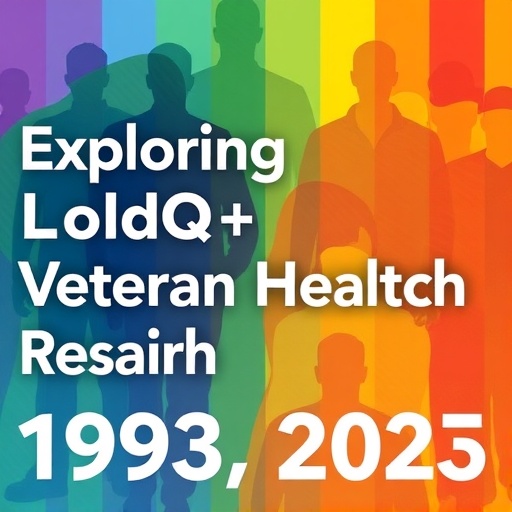In a groundbreaking study, researcher G. Alvarado explores the intricate dynamics of abortion policy agenda setting through the lens of systems thinking. The ongoing debate surrounding reproductive rights has led to a myriad of policies being proposed and implemented across various jurisdictions. However, the complexity often associated with such policies can impede effective analysis and understanding. In this context, Alvarado’s research sheds light on how systems thinking can harmonize the multiple streams framework, offering a novel validation of this model in the realm of health policy.
The multiple streams framework, initially proposed by John Kingdon in the early 1980s, posits that policy change occurs when three independent streams—problems, policies, and politics—come together. Alvarado’s investigation seeks to refine this model, integrating systems thinking to reduce the inherent complexity that often clouds the policymaking process. By employing a systems approach, the study aims to identify and articulate the connections between these streams more clearly, thereby illuminating the pathways through which abortion policies evolve over time.
This research is particularly pertinent given the socio-political landscape surrounding abortion rights. In recent years, numerous legislative efforts have emerged to either expand or restrict access to abortion services. These efforts have not only sparked significant public discourse but have also provoked a series of complex legal battles. By applying systems thinking, Alvarado argues that stakeholders can gain a more comprehensive understanding of the forces at play in abortion policy-making. This understanding may lead to more effective advocacy and promotion of desired policy outcomes.
The methodology employed by Alvarado involves a detailed analysis of case studies where abortion policies were successfully pushed onto the agenda. By examining these instances through a systems thinking lens, the study reveals that successful policy change often relies on the synchronization of the aforementioned streams. This synchronization is essential in a landscape marked by competing narratives and vested interests that often cloud effective decision-making.
Importantly, Alvarado’s validation of the multiple streams framework demonstrates that it is not merely a theoretical exercise; it has practical implications for policy advocates and health care professionals. By understanding how to navigate the complexities of abortion policy, stakeholders can better position themselves to influence the political discourse surrounding reproductive rights. This is crucial, particularly in light of recent challenges faced by abortion rights advocates in various jurisdictions across the globe.
The implications of this research extend beyond academic circles. The findings could inform legislative strategy and enhance the effectiveness of advocacy campaigns aimed at raising awareness around reproductive rights. Alvarado emphasizes that a nuanced comprehension of the interplay between the problem, policy, and political streams can guide advocates in crafting more effective communication strategies to resonate with policymakers and the general public.
Moreover, the study suggests that applying a systems thinking approach could serve as a blueprint not only for abortion policy but also for other complex health issues. Many public health challenges, including those related to infectious diseases and mental health, share similar characteristics of multifaceted stakeholders and competing interests. By cultivating a systems perspective, policymakers can engage more constructively with the complexities inherent in these areas, potentially leading to more actionable strategies and outcomes.
The analysis presented in Alvarado’s work also scrutinizes the historical context of abortion policy in the United States and internationally. By tracing the evolution of abortion laws and regulations, the study highlights the fluctuating nature of public opinion and political will. The capacity to understand these historical shifts through a systems lens allows for a more robust analysis of current trends and can inform predictions about future developments in reproductive health policy.
One of the most striking features of Alvarado’s research is its emphasis on the role of public perception in shaping policy outcomes. As societal attitudes toward abortion continue to evolve, the framework presented in this study underscores the importance of advocacy efforts that address not only legislative hurdles but also the broader cultural narratives surrounding reproductive rights. By recognizing the importance of the political stream in the multiple streams framework, advocates can more effectively tailor their messages to the prevailing sentiments within various communities.
Furthermore, the study highlights the significance of collaboration among stakeholders, including health professionals, policymakers, and community advocates. Alvarado posits that by fostering cross-sector partnerships and open dialogues, the complexities of abortion policy can be tackled more effectively. This collaborative approach promises to enhance the fluidity of the multiple streams, ultimately facilitating more responsive and informed policymaking.
As the ramifications of this research unfold, it is clear that Alvarado’s work transcends the academic sphere. By bridging theory and practice, the study has the potential to galvanize a movement towards more rational, compassionate, and effective abortion policies. In essence, it calls for a reevaluation of how policymakers, advocates, and researchers engage with issues related to reproductive health—urging a shift towards a more systems-oriented approach.
In conclusion, Alvarado’s validation of the multiple streams framework through the application of systems thinking offers a fresh perspective on the abortion policy agenda. By dissecting the complexities that have historically hampered effective policymaking, this research equips stakeholders with valuable insights to better navigate the shifting tides of public health policy. As the discourse surrounding abortion and reproductive rights continues to evolve, the implications of this study will undoubtedly resonate, serving as a clarion call for a more nuanced, informed, and strategic approach to policy advocacy in reproductive health.
Subject of Research: Abortion Policy Agenda Setting
Article Title: From complexity to parsimony: A systems thinking validation of the multiple streams framework in abortion policy agenda setting.
Article References:
Alvarado, G. From complexity to parsimony: A systems thinking validation of the multiple streams framework in abortion policy agenda setting.
Health Res Policy Sys 23, 143 (2025). https://doi.org/10.1186/s12961-025-01392-y
Image Credits: AI Generated
DOI: 10.1186/s12961-025-01392-y
Keywords: abortion policy; systems thinking; multiple streams framework; health policy; reproductive rights; policymaking; advocacy; public perception; collaboration; public health.
Tags: abortion policy analysischallenges in analyzing abortion rights legislationcomplexity in abortion policy developmenteffects of political climate on reproductive rightsG. Alvarado research on reproductive rightsharmonizing policy agendas through systems thinkingimproving understanding of abortion policyintegrating systems thinking in public policymultiple streams framework in policymakingpathways of abortion policy evolutionsocio-political dynamics of abortion legislationsystems thinking in health policy





